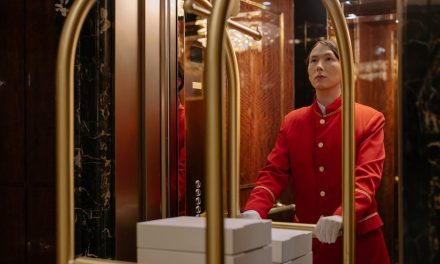Table of Contents
- Introduction
- Strategies for Setting Clear and Achievable Goals for Remote Employees
- The Importance of Regular Check-Ins and Feedback for Remote Employee Goal Setting
- How to Tailor Goal Setting Approaches for Hybrid Work Environments
- Utilizing Technology to Track and Monitor Remote Employee Goal Progress
- Encouraging Collaboration and Teamwork in Goal Setting for Remote and Hybrid Employees
- Addressing Challenges and Obstacles in Remote Employee Goal Achievement
- Celebrating Success and Recognizing Achievements in Remote Employee Goal Setting
- Setting Long-Term Career Development Goals for Remote and Hybrid Employees
- Creating a Culture of Accountability and Ownership in Remote Employee Goal Setting
- Q&A
- Conclusion
“Empowering remote and hybrid employees to reach new heights through strategic goal-setting.”
Introduction
Setting goals for remote and hybrid employees is crucial for ensuring productivity, accountability, and success in a flexible work environment. By clearly defining expectations and objectives, both employees and managers can work together to achieve desired outcomes. In this article, we will explore the importance of setting goals for remote and hybrid employees and provide tips for effectively establishing and tracking progress towards these goals.
Strategies for Setting Clear and Achievable Goals for Remote Employees
Setting goals for remote and hybrid employees is crucial for ensuring productivity and success in today’s work environment. With the rise of remote work and hybrid work models, managers must adapt their goal-setting strategies to accommodate the unique challenges and opportunities presented by these new ways of working.
One key aspect of setting goals for remote and hybrid employees is ensuring that they are clear and achievable. Clear goals provide employees with a roadmap for success, while achievable goals help to motivate and inspire employees to reach their full potential. By setting clear and achievable goals, managers can help remote and hybrid employees stay focused and on track, even when working outside of the traditional office setting.
When setting goals for remote and hybrid employees, it is important to consider the unique challenges that these employees may face. Remote employees, for example, may struggle with feelings of isolation and disconnection from their team, while hybrid employees may find it difficult to balance their time between working in the office and working remotely. By taking these challenges into account when setting goals, managers can help remote and hybrid employees overcome obstacles and achieve success.
One effective strategy for setting clear and achievable goals for remote and hybrid employees is to use the SMART goal-setting framework. SMART goals are Specific, Measurable, Achievable, Relevant, and Time-bound. By setting goals that meet these criteria, managers can ensure that remote and hybrid employees have a clear understanding of what is expected of them and how their performance will be evaluated.
Another important aspect of setting goals for remote and hybrid employees is providing regular feedback and support. Remote employees, in particular, may benefit from more frequent check-ins and communication to ensure that they are on track and meeting their goals. By providing regular feedback and support, managers can help remote and hybrid employees stay motivated and engaged in their work.
In addition to setting clear and achievable goals, managers should also encourage remote and hybrid employees to set their own goals and take ownership of their work. By empowering employees to set their own goals, managers can help remote and hybrid employees feel more invested in their work and motivated to succeed. This sense of ownership can lead to increased productivity and job satisfaction among remote and hybrid employees.
Ultimately, setting goals for remote and hybrid employees requires a thoughtful and strategic approach. By considering the unique challenges and opportunities presented by remote and hybrid work models, managers can set clear and achievable goals that help remote and hybrid employees succeed. By using the SMART goal-setting framework, providing regular feedback and support, and encouraging employees to take ownership of their work, managers can help remote and hybrid employees reach their full potential and achieve success in today’s evolving work environment.
The Importance of Regular Check-Ins and Feedback for Remote Employee Goal Setting
Setting goals for remote and hybrid employees is crucial for their success and productivity. In a virtual work environment, it can be challenging for employees to stay motivated and focused without clear objectives to work towards. Regular check-ins and feedback are essential components of effective goal setting for remote employees.
One of the main benefits of setting goals for remote employees is that it provides them with a sense of direction and purpose. When employees have clear goals to work towards, they are more likely to stay engaged and motivated. This is especially important in a remote work setting, where employees may feel isolated and disconnected from their colleagues.
Regular check-ins with remote employees are essential for monitoring progress towards goals and providing support and guidance when needed. These check-ins can take the form of one-on-one meetings, virtual team meetings, or even informal check-ins via email or messaging platforms. The key is to ensure that remote employees feel supported and connected to their team and organization.
Feedback is another critical component of effective goal setting for remote employees. Providing regular feedback allows employees to track their progress towards their goals and make adjustments as needed. It also helps to reinforce positive behaviors and address any areas for improvement. Feedback should be specific, timely, and constructive to be most effective.
In a remote work environment, it can be easy for employees to feel disconnected from their managers and colleagues. Regular check-ins and feedback help to bridge this gap and ensure that remote employees feel valued and supported. By providing regular feedback, managers can help remote employees stay on track and reach their goals.
Setting goals for remote employees also helps to align individual goals with organizational objectives. When employees have clear goals that are aligned with the overall goals of the organization, they are more likely to be engaged and motivated. This alignment helps to drive performance and productivity in a remote work setting.
In addition to setting goals for remote employees, it is important to establish a system for tracking progress towards those goals. This could involve using project management tools, setting up regular progress updates, or implementing performance metrics to measure success. By tracking progress towards goals, managers can identify any potential roadblocks or challenges and provide support as needed.
Ultimately, setting goals for remote employees is essential for their success and the success of the organization as a whole. Regular check-ins and feedback help to keep remote employees engaged and motivated, while also ensuring that their goals are aligned with the overall objectives of the organization. By setting clear goals, providing regular feedback, and tracking progress towards those goals, managers can help remote employees thrive in a virtual work environment.
How to Tailor Goal Setting Approaches for Hybrid Work Environments
Setting goals for remote and hybrid employees can be a challenging task for managers and organizations. With the rise of remote work and hybrid work environments, it is essential to tailor goal-setting approaches to ensure that employees are motivated, engaged, and productive. In this article, we will explore how to effectively set goals for remote and hybrid employees to drive success and achieve desired outcomes.
One of the key considerations when setting goals for remote and hybrid employees is to establish clear and specific objectives. Clear goals provide employees with a sense of direction and purpose, helping them stay focused and motivated. When setting goals, it is important to ensure that they are SMART – specific, measurable, achievable, relevant, and time-bound. This framework helps employees understand what is expected of them and enables managers to track progress and provide feedback effectively.
In a remote or hybrid work environment, communication is crucial for setting and achieving goals. Managers should regularly communicate with their remote and hybrid employees to clarify expectations, provide guidance, and offer support. Regular check-ins, team meetings, and one-on-one discussions can help keep employees on track and ensure that goals are being met. Additionally, leveraging technology tools such as project management software, communication platforms, and performance tracking systems can facilitate seamless communication and collaboration among remote and hybrid teams.
Another important aspect of goal setting for remote and hybrid employees is to foster a culture of accountability and autonomy. Remote and hybrid employees often work independently and may not have direct supervision, making it essential for them to take ownership of their goals and responsibilities. Managers can empower employees by delegating tasks, providing autonomy to make decisions, and encouraging self-management. By fostering a sense of accountability and trust, employees are more likely to take ownership of their goals and strive for excellence.
Flexibility is also key when setting goals for remote and hybrid employees. In a dynamic work environment, priorities may shift, deadlines may change, and unforeseen challenges may arise. Managers should be flexible and adaptable in their goal-setting approach, allowing for adjustments and revisions as needed. By being open to change and accommodating unforeseen circumstances, managers can help remote and hybrid employees navigate challenges and stay on track towards achieving their goals.
Lastly, recognition and rewards play a vital role in motivating remote and hybrid employees to achieve their goals. Acknowledging employees’ efforts, celebrating milestones, and providing incentives can boost morale and drive performance. Managers should regularly recognize and reward employees for their hard work, dedication, and achievements, whether through verbal praise, bonuses, promotions, or other forms of recognition. By showing appreciation and valuing employees’ contributions, managers can foster a positive work culture and motivate remote and hybrid employees to excel.
In conclusion, setting goals for remote and hybrid employees requires a tailored approach that emphasizes clear objectives, effective communication, accountability, flexibility, and recognition. By implementing these strategies, managers can empower remote and hybrid employees to succeed, drive performance, and achieve desired outcomes. With the right goal-setting framework in place, organizations can maximize the potential of their remote and hybrid workforce and thrive in today’s evolving work landscape.
Utilizing Technology to Track and Monitor Remote Employee Goal Progress

Setting goals for remote and hybrid employees is essential for ensuring productivity and accountability in a virtual work environment. With the rise of remote work due to the COVID-19 pandemic, many organizations have had to adapt their goal-setting strategies to accommodate employees working from home or in a hybrid setting. Utilizing technology to track and monitor remote employee goal progress has become increasingly important in this new era of work.
One of the key challenges of setting goals for remote employees is the lack of face-to-face interaction and supervision. Without the physical presence of a manager or team members, it can be difficult to ensure that remote employees are staying on track and meeting their goals. This is where technology comes in handy. There are a variety of tools and software available that can help managers and employees track and monitor goal progress in real-time.
One popular tool for tracking employee goals is OKRs (Objectives and Key Results). OKRs are a goal-setting framework that helps organizations set ambitious, measurable goals and track progress towards achieving them. With OKRs, employees set objectives that are ambitious and aspirational, and then define key results that will indicate whether the objective has been achieved. This framework provides a clear roadmap for employees to follow and allows managers to monitor progress and provide feedback along the way.
Another useful technology for tracking remote employee goal progress is project management software. Tools like Asana, Trello, and Monday.com allow teams to collaborate on projects, set deadlines, and track progress in real-time. These platforms provide visibility into each team member’s tasks and progress, making it easy for managers to monitor goal achievement and identify any potential roadblocks.
In addition to project management software, many organizations are also using performance management software to track employee goals and progress. These platforms allow employees to set goals, track their progress, and receive feedback from managers and peers. Performance management software can also generate reports and analytics to help managers assess employee performance and identify areas for improvement.
One important aspect of utilizing technology to track and monitor remote employee goal progress is ensuring that employees have access to the necessary tools and resources. This may include providing training on how to use the software, setting clear expectations for goal-setting and tracking, and offering support and guidance as needed. It’s also important for managers to communicate regularly with remote employees to provide feedback, answer questions, and address any concerns that may arise.
Overall, setting goals for remote and hybrid employees requires a combination of clear communication, effective goal-setting strategies, and the right technology tools. By utilizing technology to track and monitor remote employee goal progress, organizations can ensure that their virtual teams stay on track, meet their objectives, and contribute to the overall success of the organization. With the right tools and resources in place, remote employees can thrive in a virtual work environment and achieve their goals with confidence.
Encouraging Collaboration and Teamwork in Goal Setting for Remote and Hybrid Employees
Setting goals for remote and hybrid employees is crucial for ensuring productivity and success in today’s work environment. With the rise of remote work and hybrid work models, it is more important than ever for organizations to establish clear goals and expectations for their employees. Encouraging collaboration and teamwork in goal setting can help remote and hybrid employees feel more connected to their colleagues and the overall mission of the organization.
One of the key benefits of setting goals for remote and hybrid employees is that it provides a sense of direction and purpose. When employees know what is expected of them and have clear goals to work towards, they are more likely to stay motivated and engaged in their work. This can lead to increased productivity and better overall performance.
Collaboration and teamwork are essential components of goal setting for remote and hybrid employees. By involving employees in the goal-setting process, organizations can ensure that goals are realistic and achievable. When employees have a say in setting their own goals, they are more likely to be committed to achieving them. This can also help foster a sense of ownership and accountability among employees.
One way to encourage collaboration and teamwork in goal setting for remote and hybrid employees is to hold regular team meetings or check-ins. These meetings provide an opportunity for employees to discuss their goals, share progress updates, and offer support to one another. By creating a sense of community and camaraderie among remote and hybrid employees, organizations can help foster a collaborative and team-oriented work environment.
Another way to encourage collaboration and teamwork in goal setting is to use technology to facilitate communication and collaboration. Tools such as project management software, video conferencing platforms, and instant messaging apps can help remote and hybrid employees stay connected and work together towards common goals. By leveraging technology to support collaboration, organizations can overcome the challenges of remote work and create a more cohesive and productive team.
In addition to technology, organizations can also encourage collaboration and teamwork in goal setting by providing training and resources to help employees work together effectively. This can include training on effective communication, conflict resolution, and team building. By investing in the development of their employees’ collaboration skills, organizations can create a more cohesive and high-performing team.
Ultimately, setting goals for remote and hybrid employees is essential for driving success in today’s work environment. By encouraging collaboration and teamwork in goal setting, organizations can help remote and hybrid employees feel more connected to their colleagues and the overall mission of the organization. This can lead to increased motivation, productivity, and overall performance. By leveraging technology, providing training, and fostering a sense of community, organizations can create a collaborative and team-oriented work environment that supports the success of remote and hybrid employees.
Addressing Challenges and Obstacles in Remote Employee Goal Achievement
Setting goals for remote and hybrid employees can be a challenging task for managers and organizations. With the rise of remote work due to the COVID-19 pandemic, many companies have had to adapt to a new way of working and managing their employees. One of the key challenges in setting goals for remote and hybrid employees is ensuring that they are clear, achievable, and aligned with the overall objectives of the organization.
One of the first steps in setting goals for remote and hybrid employees is to establish clear communication channels. Without regular face-to-face interactions, it can be difficult for managers to effectively communicate expectations and provide feedback to their remote employees. Utilizing technology such as video conferencing, instant messaging, and project management tools can help bridge the communication gap and ensure that employees are aware of their goals and objectives.
Another challenge in setting goals for remote and hybrid employees is ensuring that they are achievable and realistic. Remote employees may face unique challenges such as distractions at home, lack of access to resources, and feelings of isolation. It is important for managers to take these factors into consideration when setting goals and to provide support and resources to help remote employees succeed.
One way to ensure that goals are achievable for remote and hybrid employees is to break them down into smaller, manageable tasks. By setting clear milestones and deadlines, employees can track their progress and stay motivated to achieve their goals. Regular check-ins and feedback sessions can also help remote employees stay on track and address any challenges or obstacles that may arise.
In addition to setting clear and achievable goals, it is important for managers to ensure that they are aligned with the overall objectives of the organization. Remote and hybrid employees should understand how their individual goals contribute to the success of the team and the company as a whole. By aligning individual goals with organizational goals, employees can see the bigger picture and feel more motivated to achieve their objectives.
One of the key obstacles in remote employee goal achievement is the lack of visibility and accountability. Without regular in-person interactions, it can be difficult for managers to track the progress of their remote employees and hold them accountable for their goals. Utilizing performance management tools and software can help managers monitor employee performance, provide feedback, and track goal achievement.
Another challenge in remote employee goal achievement is the lack of motivation and engagement. Remote employees may feel disconnected from their team and the organization, leading to feelings of isolation and disengagement. It is important for managers to foster a sense of belonging and community among remote employees, and to provide opportunities for collaboration and teamwork.
In conclusion, setting goals for remote and hybrid employees requires clear communication, achievable objectives, alignment with organizational goals, visibility, and accountability. By addressing these challenges and obstacles, managers can help remote employees succeed and contribute to the overall success of the organization. With the right support and resources, remote and hybrid employees can achieve their goals and thrive in a remote work environment.
Celebrating Success and Recognizing Achievements in Remote Employee Goal Setting
Setting goals for remote and hybrid employees is crucial for their success and the overall productivity of the organization. In a remote or hybrid work environment, it can be challenging to keep employees motivated and engaged, as they may not have the same level of interaction with their colleagues or supervisors as they would in a traditional office setting. However, by setting clear and achievable goals, employers can help remote and hybrid employees stay focused and on track.
One of the key benefits of setting goals for remote and hybrid employees is that it provides them with a sense of direction and purpose. When employees know what is expected of them and have clear objectives to work towards, they are more likely to stay motivated and engaged in their work. Setting goals also helps employees prioritize their tasks and manage their time effectively, which can lead to increased productivity and efficiency.
In addition to providing employees with a sense of direction, setting goals can also help employers track their progress and evaluate their performance. By establishing specific, measurable, achievable, relevant, and time-bound (SMART) goals, employers can easily monitor their employees’ progress and provide feedback on their performance. This can help employees identify areas for improvement and make adjustments to their work habits or strategies as needed.
When setting goals for remote and hybrid employees, it is important to consider the unique challenges and opportunities that come with working in a virtual or hybrid environment. For example, remote employees may struggle with feelings of isolation or disconnection from their colleagues, while hybrid employees may find it challenging to balance their time between working in the office and working from home. By taking these factors into account when setting goals, employers can help their employees overcome these challenges and thrive in their roles.
One effective strategy for setting goals for remote and hybrid employees is to involve them in the goal-setting process. By soliciting input from employees and allowing them to contribute their ideas and suggestions, employers can ensure that the goals are relevant, achievable, and aligned with the employees’ interests and strengths. This can help employees feel more invested in the goals and motivated to achieve them.
Another important aspect of setting goals for remote and hybrid employees is to celebrate their successes and recognize their achievements. By acknowledging and rewarding employees for reaching their goals, employers can help boost morale, motivation, and engagement. This can also help foster a positive work culture and build a sense of camaraderie among remote and hybrid employees.
In conclusion, setting goals for remote and hybrid employees is essential for their success and the overall productivity of the organization. By providing employees with clear objectives, tracking their progress, involving them in the goal-setting process, and celebrating their successes, employers can help remote and hybrid employees stay motivated, engaged, and focused on achieving their goals. Ultimately, setting goals for remote and hybrid employees can lead to increased productivity, efficiency, and satisfaction in the workplace.
Setting Long-Term Career Development Goals for Remote and Hybrid Employees
Setting goals for remote and hybrid employees is crucial for their long-term career development. With the rise of remote work and hybrid work models, it is essential for employers to provide guidance and support to their employees in setting and achieving their career goals. In this article, we will discuss the importance of setting long-term career development goals for remote and hybrid employees and provide tips on how employers can support their employees in this process.
One of the key benefits of setting long-term career development goals for remote and hybrid employees is that it helps them stay motivated and focused on their professional growth. When employees have clear goals to work towards, they are more likely to be engaged and productive in their work. Setting goals also provides employees with a sense of direction and purpose, which can help them overcome challenges and obstacles in their career.
To support remote and hybrid employees in setting long-term career development goals, employers can start by having open and honest conversations with their employees about their career aspirations. By understanding what motivates and excites their employees, employers can help them set goals that align with their interests and strengths. Employers can also provide feedback and guidance to their employees on how to achieve their goals, such as recommending training programs or networking opportunities.
Another way employers can support remote and hybrid employees in setting long-term career development goals is by providing them with opportunities for growth and advancement within the company. This can include offering promotions, raises, or new responsibilities that challenge and stretch their skills. By showing their employees that there are opportunities for advancement within the company, employers can motivate their employees to set ambitious career goals and work towards achieving them.
In addition to providing opportunities for growth and advancement, employers can also support remote and hybrid employees in setting long-term career development goals by offering mentorship and coaching. By pairing employees with experienced mentors who can provide guidance and advice, employers can help their employees navigate their career paths and overcome obstacles. Coaching can also help employees develop the skills and confidence they need to achieve their goals.
It is important for employers to regularly check in with their remote and hybrid employees to review their progress towards their long-term career development goals. By providing feedback and support, employers can help their employees stay on track and make adjustments as needed. Regular check-ins also show employees that their goals are important to the company and that their progress is being monitored and supported.
In conclusion, setting long-term career development goals for remote and hybrid employees is essential for their professional growth and success. By providing guidance, support, and opportunities for growth, employers can help their employees set ambitious goals and work towards achieving them. By investing in their employees’ career development, employers can create a motivated and engaged workforce that is committed to achieving their goals and contributing to the success of the company.
Creating a Culture of Accountability and Ownership in Remote Employee Goal Setting
Setting goals for remote and hybrid employees is crucial for creating a culture of accountability and ownership within an organization. With the rise of remote work, it is more important than ever to establish clear expectations and objectives for employees working outside of the traditional office setting. By setting goals that are specific, measurable, achievable, relevant, and time-bound (SMART), employers can ensure that remote and hybrid employees are aligned with the company’s overall objectives and are motivated to achieve success.
One of the key challenges in setting goals for remote and hybrid employees is the lack of face-to-face interaction. Without the ability to check in regularly or observe employees in person, managers may struggle to monitor progress and provide feedback in a timely manner. However, by leveraging technology and communication tools, employers can bridge this gap and create a more transparent and collaborative goal-setting process.
When setting goals for remote and hybrid employees, it is important to involve them in the process. By soliciting input and feedback from employees, managers can ensure that goals are realistic and achievable, and that employees feel a sense of ownership and accountability for their own success. This collaborative approach can also help to build trust and strengthen relationships between managers and employees, even when they are working remotely.
In addition to involving employees in the goal-setting process, it is important to provide regular feedback and support throughout the goal attainment period. Managers should schedule regular check-ins with remote and hybrid employees to discuss progress, address any challenges or obstacles, and provide guidance and support as needed. By maintaining open lines of communication and offering ongoing feedback, managers can help remote employees stay on track and make necessary adjustments to achieve their goals.
Another important aspect of setting goals for remote and hybrid employees is to ensure that goals are aligned with the company’s overall objectives and strategic priorities. By linking individual goals to the broader goals of the organization, employees can see how their work contributes to the success of the company as a whole. This alignment can help to motivate employees and foster a sense of purpose and engagement in their work, even when they are working remotely.
To further enhance accountability and ownership in remote employee goal setting, employers can consider implementing performance metrics and key performance indicators (KPIs) to track progress and measure success. By establishing clear metrics and benchmarks for success, employees can better understand what is expected of them and how their performance will be evaluated. This transparency can help to motivate employees and drive performance, even in a remote or hybrid work environment.
In conclusion, setting goals for remote and hybrid employees is essential for creating a culture of accountability and ownership within an organization. By involving employees in the goal-setting process, providing regular feedback and support, aligning goals with the company’s overall objectives, and implementing performance metrics, employers can empower remote employees to take ownership of their work and achieve success. With the right tools and strategies in place, remote and hybrid employees can thrive in a virtual work environment and contribute to the overall success of the organization.
Q&A
1. How can remote and hybrid employees set effective goals?
Remote and hybrid employees can set effective goals by clearly defining objectives, creating a timeline, and regularly reviewing progress.
2. What are some common challenges remote and hybrid employees face when setting goals?
Common challenges include lack of communication, distractions at home, and difficulty in measuring progress.
3. How can managers support remote and hybrid employees in setting and achieving goals?
Managers can support remote and hybrid employees by providing clear expectations, regular check-ins, and resources for professional development.
4. What are some best practices for setting goals in a remote or hybrid work environment?
Best practices include setting SMART goals, establishing regular communication channels, and providing feedback and recognition.
5. How can remote and hybrid employees stay motivated to achieve their goals?
Remote and hybrid employees can stay motivated by setting milestones, celebrating achievements, and seeking support from colleagues and managers.
6. How can remote and hybrid employees track their progress towards their goals?
Remote and hybrid employees can track their progress by using project management tools, setting regular check-ins with managers, and keeping a record of accomplishments.
7. How can remote and hybrid employees adjust their goals if necessary?
Remote and hybrid employees can adjust their goals by reassessing priorities, seeking feedback from managers, and being flexible in their approach.
8. What role does communication play in setting and achieving goals for remote and hybrid employees?
Communication is crucial for setting and achieving goals for remote and hybrid employees as it helps in clarifying expectations, providing feedback, and staying connected with colleagues.
9. How can remote and hybrid employees ensure work-life balance while working towards their goals?
Remote and hybrid employees can ensure work-life balance by setting boundaries, taking breaks, and prioritizing self-care.
Conclusion
Setting clear and achievable goals for remote and hybrid employees is essential for their success and productivity. It helps them stay focused, motivated, and accountable for their work. By establishing specific objectives and timelines, employers can ensure that remote and hybrid employees are aligned with the company’s overall goals and objectives. Regular communication and feedback are also crucial in monitoring progress and making necessary adjustments. In conclusion, setting goals for remote and hybrid employees is a key factor in driving performance and achieving success in a flexible work environment.





